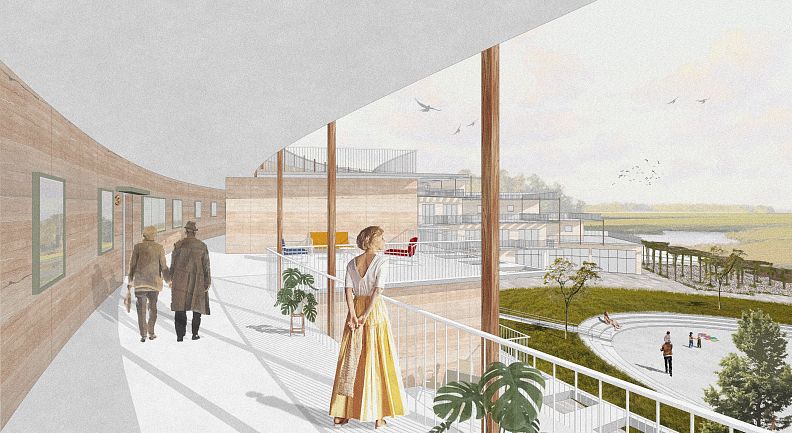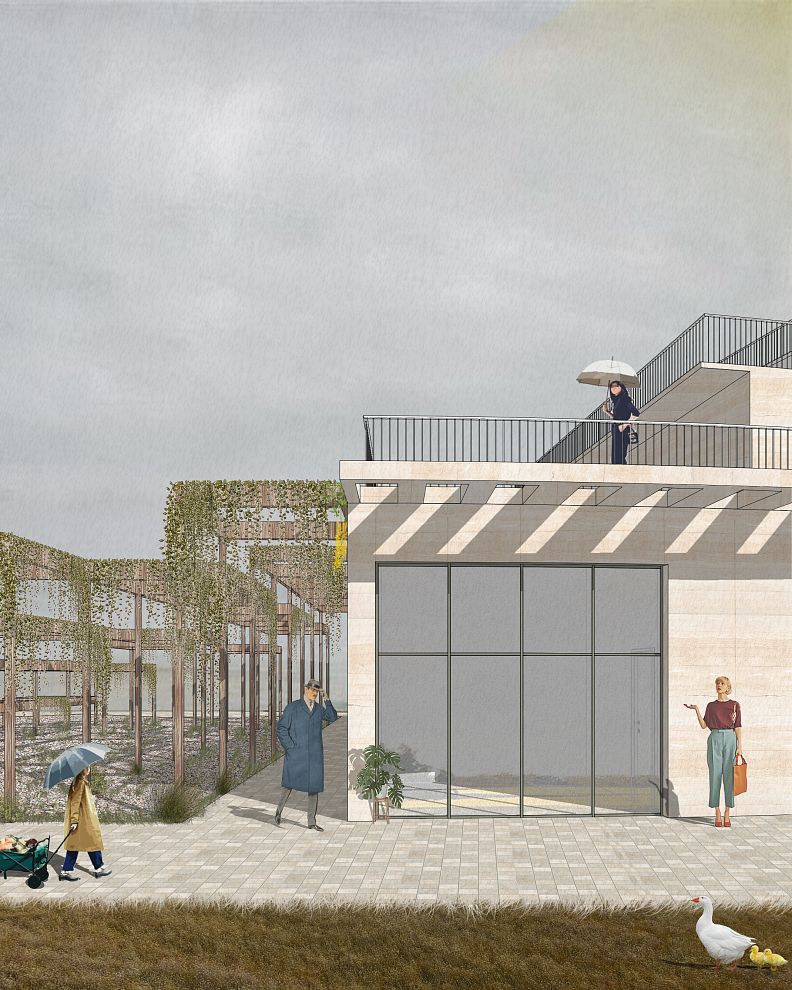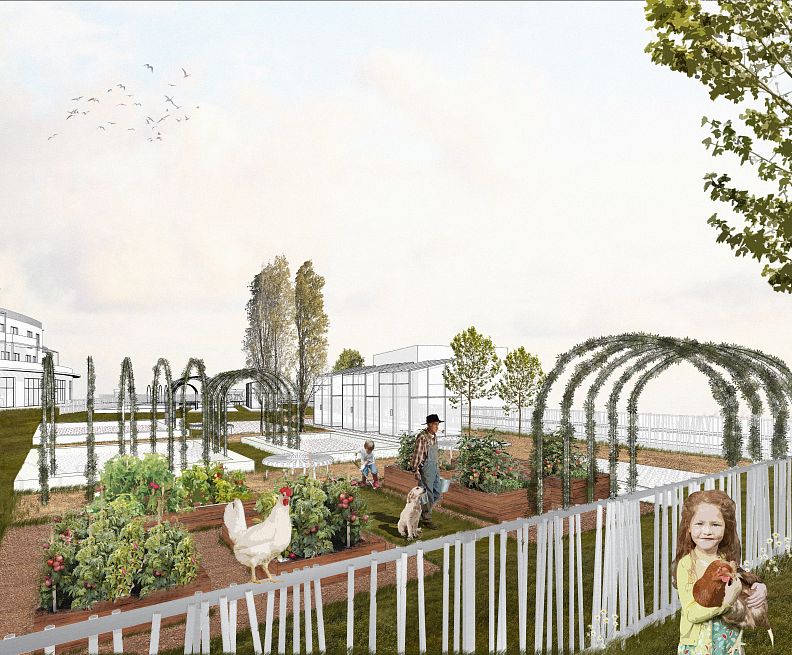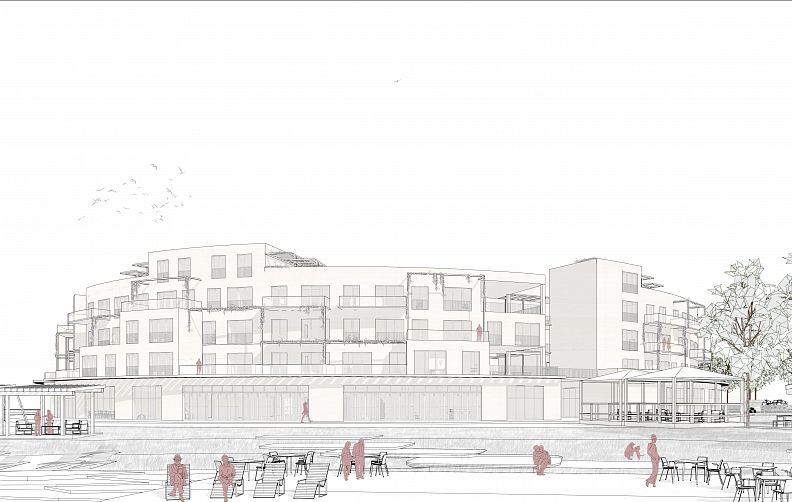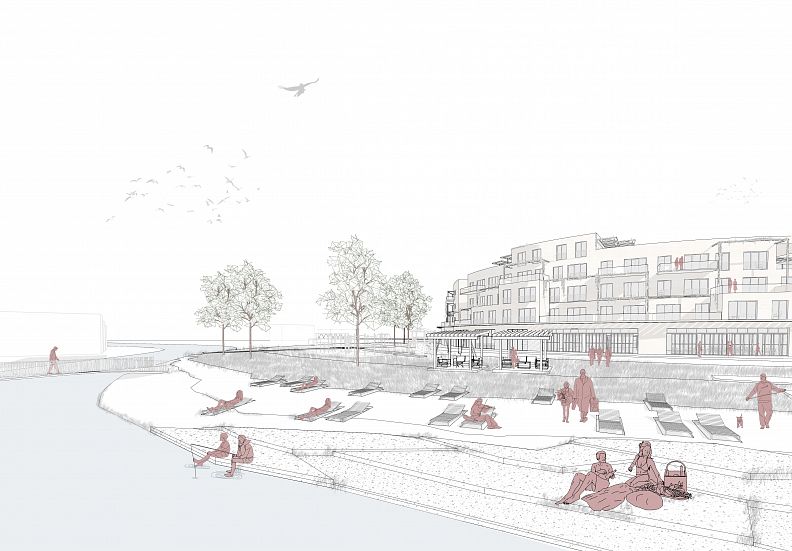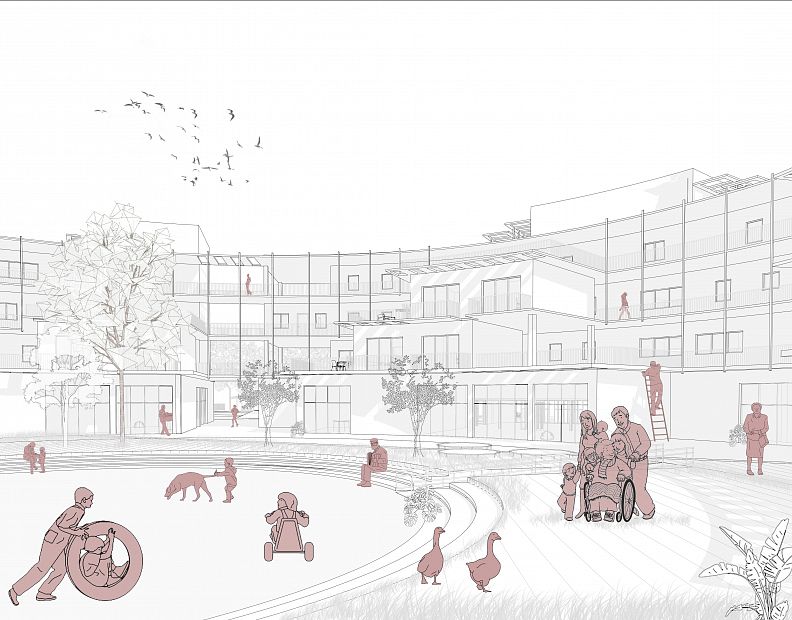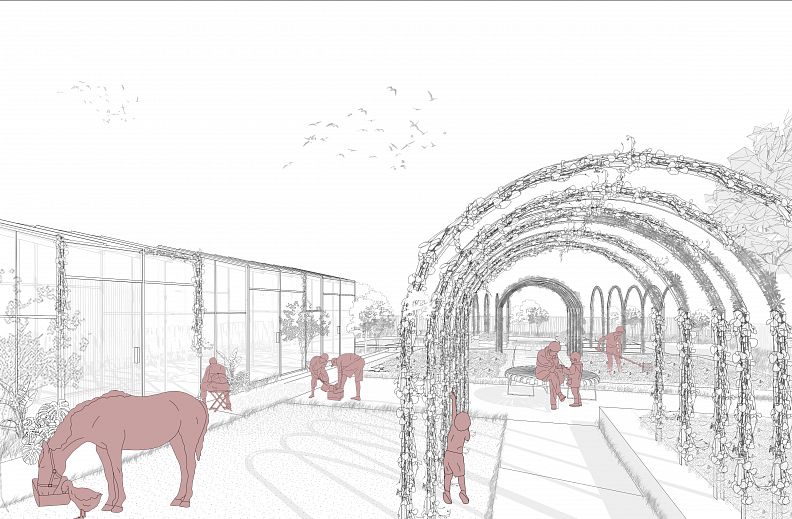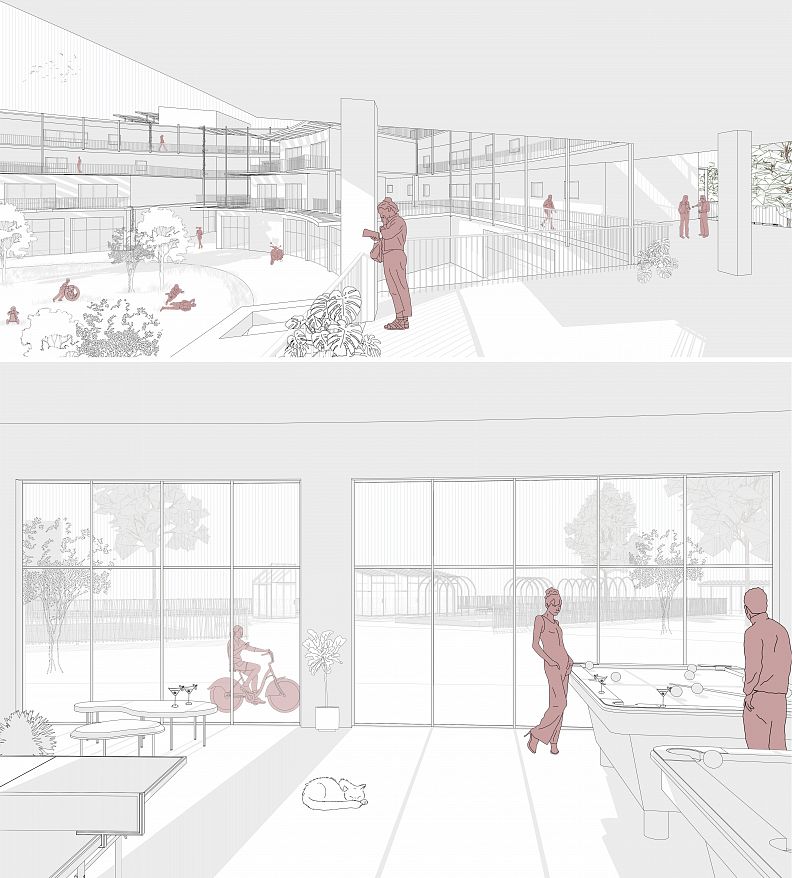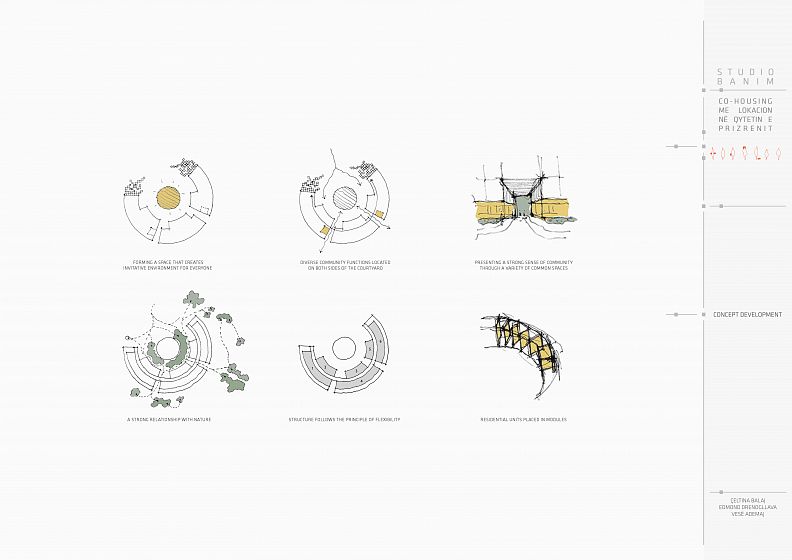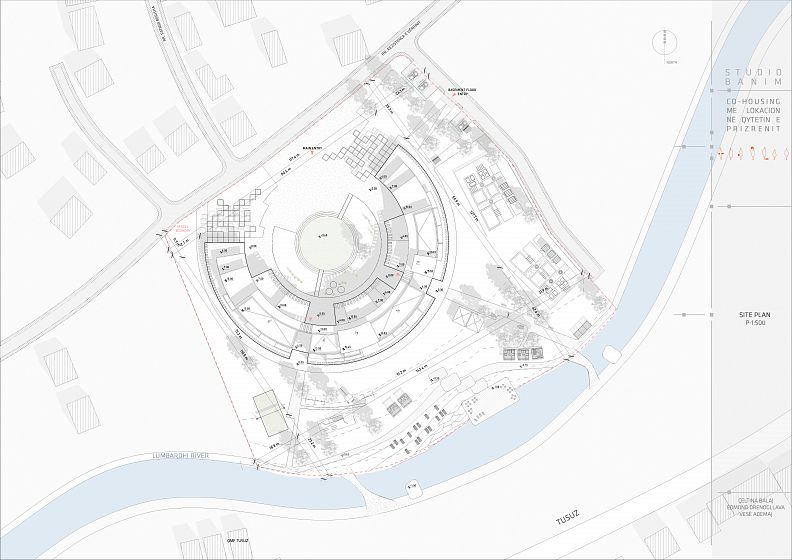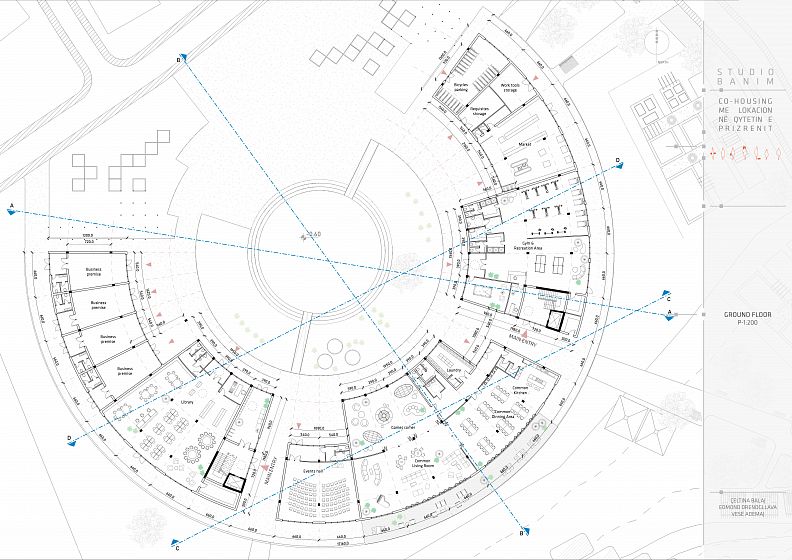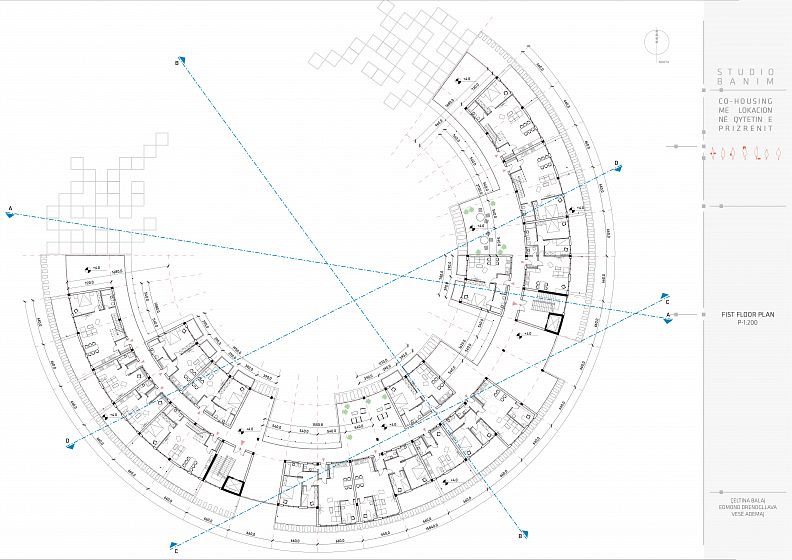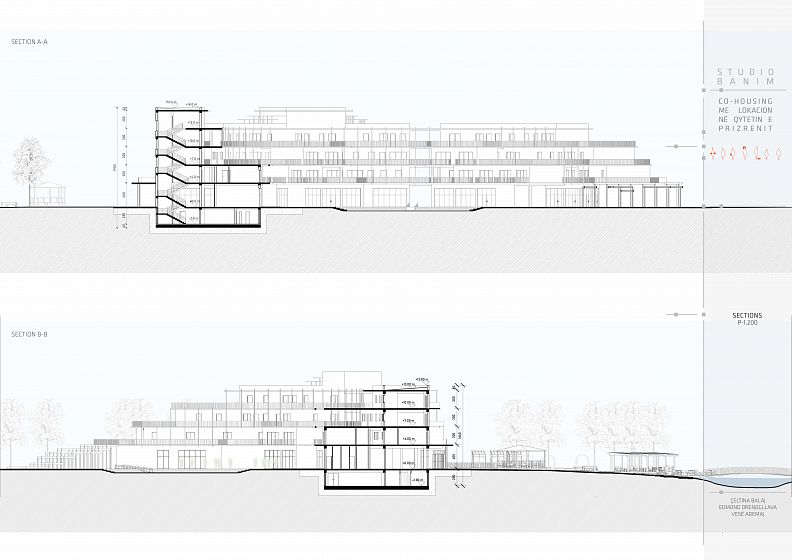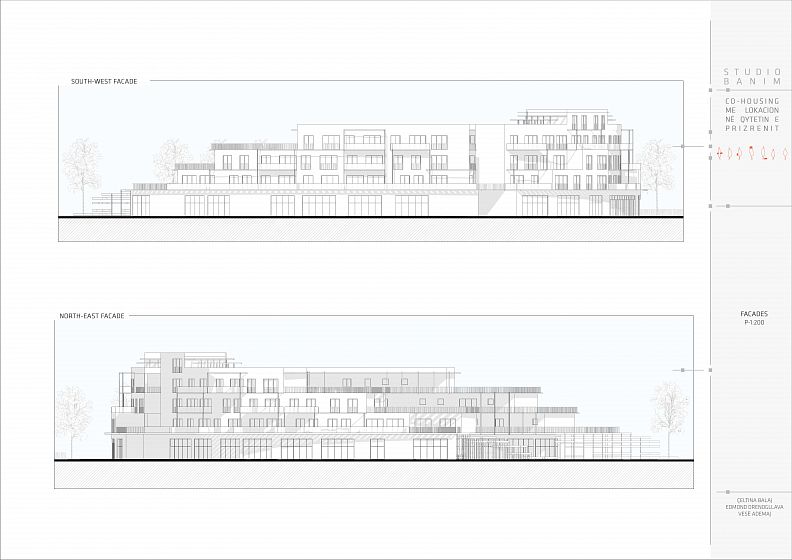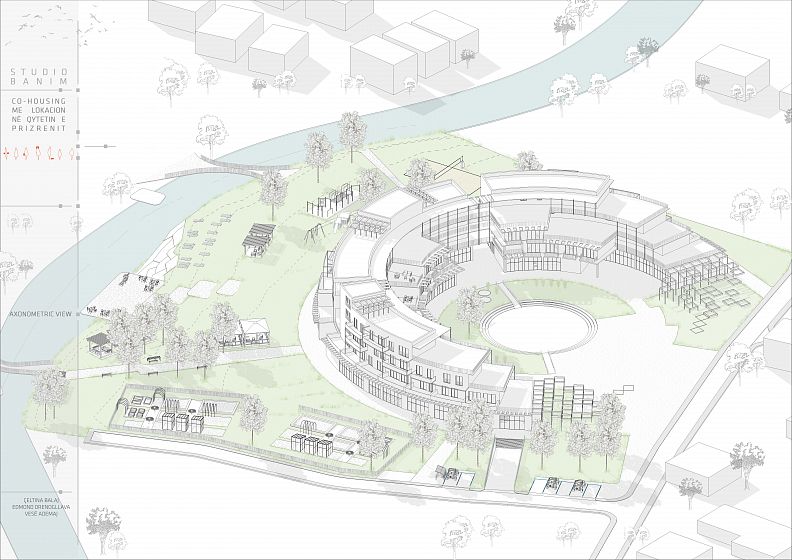PR-TOPIA

Project idea
Beyond idealistic tendencies that describe the climax of the perfect and idyllic way to develop a utopian living, protopia is offered to the city of Prizren as one of the contemporary theories of housing in architecture. Through the cohousing model, this neology is expressed as a development towards continuous improvement, not perfection. To achieve this protopic concept is chosen a location situated near the city while at the same time between nature and quiet environment of suburban, which raises a great potential in creating a unique place for an alternative way of living. The main functions for fulfilling the daily needs of the residents are quite nearby, important is the great proximity to the market and the shopping center.
Constant interaction and mutual support are the primary benefits of co-living therefore we propose to promote living close to each other through the concept of modularity. Grouping the modular units in height aims to leave a minimal footprint, respecting the initial approach to preserve nature and the earth's surface which as inseparable, offers the opportunity to use it as an asset for the crop’s cultivation by which the whole community can benefit together.
Project description
Diversity and inclusiveness are a very important factor that complements a cohousing community. For this reason, our community will include the following groups: students, the elderly, couples, new families, and families up to 5 members.
Flexibility - “One size doesn’t fit all.” That’s why we propose offering multiple modular apartment types instead of the standard, family homes. Whether it is about a single person, a family of four, a retired couple, or a group of students, this typology offers options for all. And if life happens and someone needs a different living space, they could simply stay in the community by swapping apartments with others also looking for a change.
The project is developed into a circular shape attempting to merge with the terrain to strengthen the connection with the surrounding nature and also with the inner courtyard as a space dedicated to common activities and socializing. Such a shape also contributes to creating views towards the river and the hills nearby for most of the apartments. All these principles lead to an architecture with spiritual values and meaning, built to fulfill the needs and desires of the people and to respect the identity of the place.
Technical information
This cohousing community is a living environment where doors do not need to close, where the basic point is good relations with neighbors, where generations get mixed up and everyone has a role to play, where people learn how to commit to the general interests rather than individual ones.
Providing shared spaces for common use by the community is a crucial part of designing a cohousing. Therefore, the ground floor as the most dynamic space contains a common living room, a common kitchen and dining area, games corner, gym and recreation area, event hall, market, library, bicycle parking, business premise, work tools storage, and requisites storage. While four other floors contain modular apartments suitable for all community groups, combined to create some terraces that can also be shared. Some apartments can be adjusted for handicapped residents that are a significant part of the community.
Cohousing encourages pro-environmental behavior with aspects such as carsharing and carpooling so there are provided just a few parking spaces in the basement, along with storages and technical spaces.
Rammed earth as a beautiful, affordable, local, sustainable material is used as a building envelope. Panels have a warm texture and natural soil colors which gives a sense of simplicity and changes with time by adapting to the surrounding environment.
Co-authors
Çeltina Balaj, Vesë Ademaj
